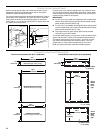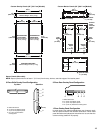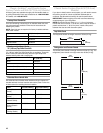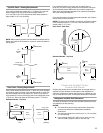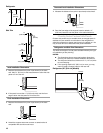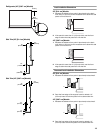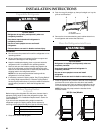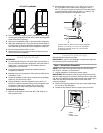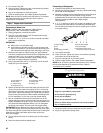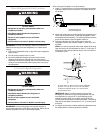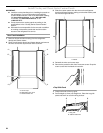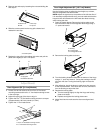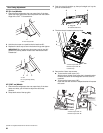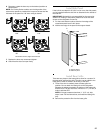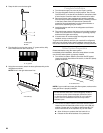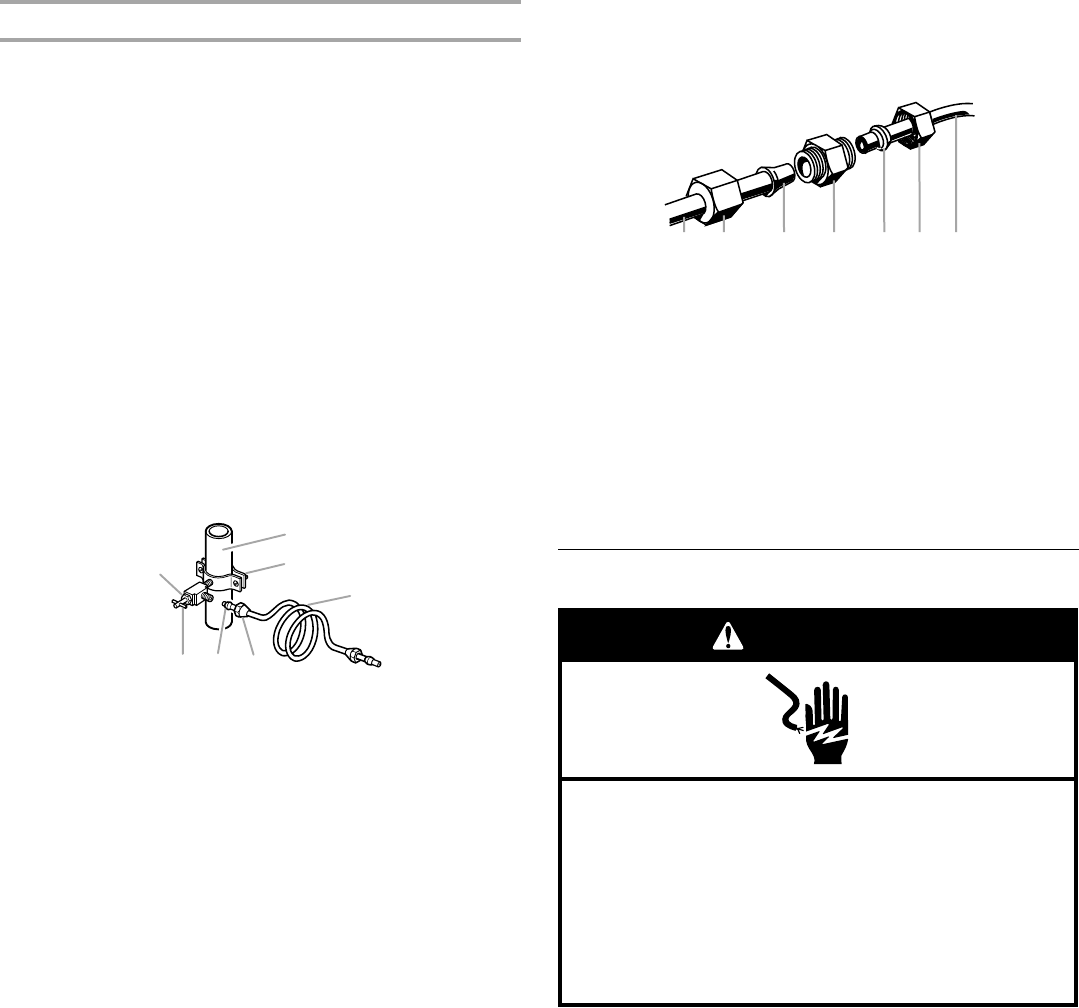
22
4. Turn shutoff valve ON.
5. Check for leaks. Tighten any nuts or connections (including
connections at the valve) that leak.
6. Plug in the refrigerator or reconnect power.
7. Flush the water system. See “Water System Preparation.”
NOTE: Allow 24 hours to produce the first batch of ice. Discard
the first three batches of ice produced. Allow 3 days to
completely fill ice container.
Style 2 - Copper Line Connection
Connecting to Water Line
NOTE: If existing water line meets the “Water System
Requirements,” see “Connecting to Refrigerator.”
1. Unplug refrigerator or disconnect power.
2. Turn OFF main water supply. Turn ON nearest faucet long
enough to clear line of water.
3. Locate a ½" to 1¹⁄₄" (1.25 cm to 3.18 cm) vertical cold water
pipe near the refrigerator.
IMPORTANT:
■ Make sure it is a cold water pipe.
■ Horizontal pipe will work, but drill on the top side of the
pipe, not the bottom. This will help keep water away from
the drill and normal sediment from collecting in the valve.
4. Determine the length of copper tubing you need. Measure
from the connection on the lower left rear of refrigerator to the
water pipe. Add 7 ft (2.1 m) to allow for cleaning. Use ¹⁄₄"
(6.35 mm) O.D. (outside diameter) copper tubing. Be sure
both ends of copper tubing are cut square.
5. Using a grounded drill, drill a ¹⁄₄" (6.35 mm) hole in the cold
water pipe you have selected.
6. Fasten the shutoff valve to the cold water pipe with the pipe
clamp. Be sure the outlet end is solidly in the ¹⁄₄" (6.35 mm)
drilled hole in the water pipe and that the washer is under the
pipe clamp. Tighten the packing nut. Tighten the pipe clamp
screws slowly and evenly so washer makes a watertight seal.
Do not overtighten, or you may crush the copper tubing.
7. Slip the compression sleeve and compression nut on the
copper tubing as shown. Insert the end of the tubing into the
outlet end squarely as far as it will go. Screw compression nut
onto outlet end with adjustable wrench. Do not overtighten
the clamp or the sleeve. This will crush the copper tubing.
IMPORTANT: Before attaching the tubing to shutoff valve, flush
the main water supply line to remove particles and air in the water
line. Allow enough flow so that water becomes clear. Flushing the
water line may help avoid filters and/or water valves from
becoming clogged.
8. Turn off the shutoff valve on the water pipe. Coil the copper
tubing.
9. Check for leaks around the saddle valve.
Connecting to Refrigerator
1. Unplug the refrigerator or disconnect power.
2. Remove the shipping tape from the gray, coiled water tubing
on the rear of the refrigerator.
3. Measure the distance from the shutoff valve to the opening in
which the refrigerator will be located. Tubing must be
extended from the shutoff valve into the refrigerator opening
following specific guidelines. See “Water Supply
Requirements.”
4. A ¹⁄₄" x ¹⁄₄" (6.35 mm to 6.35 mm) coupling is needed in order
to connect the water tubing to an existing household water
line. Thread the provided nut onto the coupling on the end of
the copper tubing.
5. Turn shutoff valve ON.
6. Check for leaks. Tighten any nuts or connections (including
connections at the valve) that leak.
7. Plug in the refrigerator or reconnect power.
8. Flush the water system. See “Water System Preparation.”
NOTE: Allow 24 hours to produce the first batch of ice. Discard
the first three batches of ice produced. Allow 3 days to
completely fill ice container.
Plug in Refrigerator
1. Set control switch at top of cabinet to the OFF position.
2. Plug into a grounded 3 prong outlet.
A.Cold water pipe
B.Pipe clamp
C.Copper tubing
D.Compression nut
E.Compression sleeve
F. Shutoff valve
G.Packing nut
A
B
C
DEF
G
A.Water tubing
B.Nut
C.Bulb
D.Coupling (purchased)
E.Ferrule (purchased)
F. Nut (purchased)
G.Household water line (as
connected in previous section)
A B C D E F G
Electrical Shock Hazard
Plug into a grounded 3 prong outlet.
Do not remove ground prong.
Do not use an adapter.
Do not use an extension cord.
Failure to follow these instructions can result in death,
fire, or electrical shock.
WARNING



